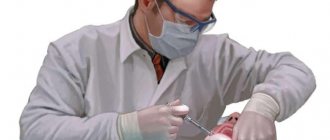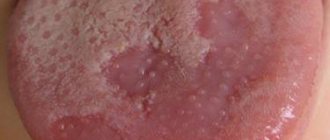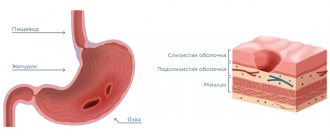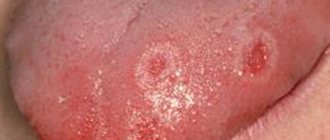- What is maxillary sinusitis?
- Symptoms
- Complications
- Types and types of maxillary sinusitis
- How is maxillary sinusitis diagnosed?
- Treatment
- Etiotropic therapy
- Puncture
- "YaMiK"-catheterization
- Treatment of symptoms of maxillary sinusitis
- Surgical intervention
- Treatment at home
- Prevention
Maxillary sinusitis (from the Latin “sinus” and “inflammation”) is an inflammation of the mucous membrane of the corresponding sinuses. The causes of this disease are various: allergies, rhinitis, diseased teeth, inflammation of the tissues around the teeth, injuries. Treatment includes conservative procedures, home remedies, and surgery.
What is maxillary sinusitis?
A person has several types of sinuses: frontal, sphenoid, maxillary and cells of the ethmoid labyrinth.
In each of these types, inflammation of the mucous membrane can occur. Then sinusitis will begin. Maxillary sinusitis is otherwise called sinusitis and is an inflammation of the paranasal sinuses. The maxillary sinuses were first illustrated by Leonardo da Vinci, and the disease itself was discovered by Nathaniel Highmore, a British surgeon and anatomist (he also described the maxillary sinuses in detail in his treatise of 1651). At that time, sinusitis was treated with home methods and heating.
results
The results of RCT and MRI of 70 men and 54 women aged from 12 to 75 years were studied. Odontogenic maxillary sinusitis was detected on the right in 73 cases, on the left in 47 patients, and bilateral localization of the process was found in 4 patients.
In 72 (63.2%) patients, RCT revealed compaction (asymmetric increase in densitometric density) of retromaxillary tissue. X-ray manifestations of odontogenic sinusitis were in the form of: destruction of the alveolar process ( n
=14), fungal lesions (
n
=10), odontogenic cysts (
n
=6), in 6 cases the filling material was determined. Moreover, in 2 patients, changes were found on the contralateral side of the odontogenic lesion (in one patient, a biopsy confirmed cancer of the alveolar process, in the other - fibro-edematous polyps). Asymmetric thickening of the bone wall in the bone window of the viewing program was present in 22 (19.3%) cases, in the soft tissue - in 30 (26.3%) cases.
In 16 (14%) patients, RCT showed thinning (reduction in thickness) of the retromaxillary tissue, and odontogenic maxillary sinusitis in this case was detected in the form of: odontogenic cysts ( n
=6) and fungal sinusitis (
n
=2). Thickening of the bone wall in the bone window was detected in 1 case, in the soft tissue window - in 3 cases.
In 10 (8.8%) patients, RCT showed a combination of thinning and thickening of adipose tissue. The causes of sinusitis in 8 cases were destruction of the alveolar process and in 2 cases - odontogenic cysts. Thickening of the bone wall in the bone window was detected in 1 case, in the soft tissue window - in 2 cases.
In 1 (0.8%) patient, RCT revealed expansion of the adjacent fatty tissue (odontogenic intraosseous cyst extended into the anterior wall and did not come into contact with the posterior wall of the maxillary sinus). The thickness of the walls when viewed in soft tissue and bone modes is symmetrical.
An MRI examination revealed an asymmetric decrease in signal intensity in T1 mode from the retromaxillary tissue in 8 (80%) patients, and its thinning was detected in 3 (30%) cases. No changes in the bone wall were detected in these patients.
Types and types of maxillary sinusitis
Depending on the etiology (cause of occurrence) of the disease, rhinogenic, odontogenic, traumatic and allergic maxillary sinusitis are distinguished.
Rhinogenic sinusitis occurs against the background of rhinitis (when the nasal mucosa becomes inflamed). The mucous membrane is the main obstacle to infections. When bacteria gets on it, a runny nose or rhinitis develops. The causes of rhinitis are different: viruses, hyperthermia, allergies.
, decreased protective properties of the body, penetration of synthetic agents, influence of dry air, too long use of drugs with a vasodilator or vasoconstrictor effect.
Rhinitis is characterized by congestion, nasal discharge, impaired circulation in the nasal cavity, and the development of congestive blood phenomena. There are 4 types of rhinitis: allergic
, chronic, acute, vasomotor.
Odontogenic sinusitis occurs due to inflammation of the mucous membrane of the maxillary sinus due to infection from an unhealthy tooth, the tissues around it, and the communication formed between the sinus and the oral cavity after tooth extraction. Symptoms of this disease can be apathy, loss of appetite, headache, aching temples, discharge from the nose or ear, cough, runny nose and others. Depending on the course of the disease, different treatment methods are chosen: antibacterial therapy and washing of the maxillary sinuses, pumping out pus or surgery.
Injury to the maxillary sinus or jaw can also lead to sinusitis.
The cause of allergic sinusitis is the body's hypersensitivity to one of the irritants. The disease begins in the nasal cavity and then spreads to the maxillary sinuses. What usually serves as an allergen? This is pollen during the flowering period, fur and excrement of pets, dust mites, medicines, household chemicals, perfumes, cosmetics, chemicals, dirty city air.
According to the duration of the disease, sinusitis is divided into:
- acute (less than 3 months);
- recurrent acute (can repeat up to four times a year);
- chronic (more than 3 months);
- exacerbation of chronic sinusitis (adding new symptoms to existing ones).
According to the severity of symptoms, sinusitis is:
- lungs
- moderate severity
- heavy.
Causes of sinusitis
The disease occurs more often in the cold season in people with weakened immune systems, but this is not the only reason. Inflammation of the maxillary sinus can develop due to:
- complications of a runny nose;
- curvature of the nasal septum;
- damage to the nasopharynx;
- adenoiditis;
- infections and bacteria;
- allergies;
- too dry indoor air;
- work in hazardous industries;
- poor condition of the upper teeth;
- trauma to the mucous membrane of the maxillary sinus.
How is maxillary sinusitis diagnosed?
When diagnosing a disease, it is necessary to collect a number of indications: find out about complaints, write down symptoms, analyze the patient’s medical history and conduct an examination (computed tomography, x-ray).
Possible symptoms: headache, temporal pain, nasal and ear discharge, accumulation of mucus in the back of the throat, intoxication (in severe cases).
The medical history should contain information about past illnesses, injuries, hypothermia, etc.
The examination usually consists of palpation and percussion in the area of the paranasal sinuses, and also includes pharyngoscopy and rhinoscopy.
Patients and methods
We analyzed the results of 114 RCT and 10 MRI patients with odontogenic maxillary sinusitis. The X-ray CT study took place in the computed tomography department of the Kursk Regional Clinical Hospital (KOKB) using X-ray computed tomographs (USA) NXI and VCT models in axial and coronal projections. MRI examination - on tomographs of the SIGNA PROFILE 0.2 T and SIGNA OVATION 0.35 T models in axial, sagittal and coronal projections. Measurements were made using the RadiAnt DICOM Viewer diagnostic image viewing program using line and ellipse tools.
Treatment
Etiotropic therapy
Prescribing antibacterial agents (the main causative agents of acute sinusitis) helps to achieve rapid results in therapy:
- β-lactams: amoxicillin, clavulanate, cefaclor, cefuroxime axetil, sulbactam;
- fluoroquinolones: levofloxacin, gatifloxacin, moxifloxacin;
- macrolides: azithromycin, clarithromycin.
Puncture
This method is used if the disease cannot be cured with medication. It is the most famous method for removing pus from the maxillary sinuses. Quite painful, unlike other procedures.
"YaMiK"-catheterization
A fairly effective remedy in the fight against maxillary sinusitis, it does not cause complications. The procedure is quite painful, like puncture; patients cannot always tolerate it well.
Important: the operation is not advisable for isolated lesions of one paranasal sinus, since infection can be introduced into healthy paranasal sinuses.
Prevention
To prevent the development of sinusitis, the following preventive measures are recommended:
- timely treatment of rhinitis and other conditions accompanied by nasal congestion;
- prevention of acute respiratory viral infections, avoidance of contact with sick people, frequent hand washing during the cold season;
- quitting smoking, including passive smoking;
- for allergic sinusitis – treatment of allergies, courses of allergen-specific immunotherapy;
- using humidifiers at home and at work;
- vaccination against influenza and pneumococcus;
- restorative measures, healthy lifestyle, proper nutrition.
NIKIO Medical Center invites all patients with acute or chronic sinusitis for consultation and treatment. The most experienced doctors work here, using modern diagnostic and treatment techniques. Timely contact with specialists greatly increases the likelihood of a cure for sinusitis, including its chronic forms.
Treatment of symptoms of maxillary sinusitis
Symptomatic treatment of sinusitis includes topical decongestants (such as xylometazoline and oxymetazoline) that improve sinus ventilation, mucolytics (such as carbocysteine) that improve mucus secretion, topical antiseptics (miramistin and others) and irrigation therapy (such as nasal douches). , before using which you need to use vasoconstrictor drugs), which flush out mucus and kill microbes in the sinus cavity, topical glucocorticosteroids, combined drugs (non-steroidal and anti-inflammatory drugs - paracetamol, ibuprofen).
Among the most effective drugs for treating the symptoms of sinusitis are
Sialor based on silver ions . It has an anti-inflammatory effect and prevents the proliferation of bacteria. Thanks to the mild action of the drug, the balance of microflora is maintained and favorable conditions are created for the regeneration of the nasal mucosa.
Surgical intervention
Drug treatments are not always effective; sometimes it is necessary to resort to surgery. At the same time, both approaches to diseased sinuses (extranasal, endonasal, combined), surgical technologies (magnifying devices and lighting devices), and surgical methods differ.
Important: after sinusitis, patients should be periodically (at least once every 3 months) observed by an otolaryngologist.
Treatment at home
An option for treating maxillary sinusitis at home is steam inhalation, which improves blood circulation, thins mucus accumulations, and also improves the flow of medications from the blood. But in acute cases of maxillary sinusitis, this method is dangerous; it can provoke generalization of the infectious process.
You can do inhalations with a decoction of herbs (calendula, celandine, bay leaf, string of sage, chamomile). Add alcohol tincture of propolis (1 teaspoon per 0.5 liter of decoction) and a couple of drops of iodine to boiling water.
In addition to such inhalations, you can also breathe over boiled potatoes. Important: you need to breathe for 10 minutes every day, the course is a week.
Warm the nose with table salt in a bag, boiled with an egg, and a blue lamp. Rinse the nose with the following solution: 1 teaspoon per glass, furatsilin (2 tablets), herbal decoctions (sage, celandine, chamomile). The procedure can be repeated up to 10 times a day.
How is surgery performed for chronic sinusitis?
In many clinics, for prolonged and recurrent inflammation of the maxillary sinus, puncture (puncture) is widely used to evacuate pus and administer drugs.
This manipulation is aimed at relieving acute inflammatory phenomena in the maxillary sinus.
But it is impossible to replace surgical intervention with this type of treatment, since it does not affect the anatomical features that complicate the drainage of the maxillary sinus.
Therefore, this approach is not entirely correct; in most cases, it is impossible to cure chronic sinusitis only with the help of punctures.
Therefore, surgery is still the main method of surgical treatment of chronic and complicated sinusitis, and sinus puncture is considered as a symptomatic measure with a temporary effect.
An operation to treat sinusitis can be carried out in the classical way, with the opening of the maxillary sinus through an incision between the upper gum and lip. These are effective, but very traumatic operations. Currently, surgical treatment of chronic sinusitis in adults is preferred in a minimally invasive way, using an endoscope and a surgical laser.
The choice of surgical technique largely depends on the technical capabilities of the medical center, the experience and skills of the operating doctor.
Treatment of sinusitis at Dr. Korenchenko Clinic
See also Treatment of ENT diseases Sinusitis Sinusitis in a child Operation maxillary sinusotomy
Dr. Korenchenko’s ENT clinic is a specialized medical center with modern high-quality equipment. We use progressive treatment and diagnostic regimens, giving preference to minimally invasive, highly effective techniques. Surgeries on ENT organs in our clinic are performed endoscopically; if necessary, other technologies are also used.
Endoscopic ENT operations do not require general anesthesia (anesthesia), do not violate the integrity of the bone walls of the sinus, do not provoke pronounced swelling and subsequent severe scarring, and are practically bloodless. This reduces rehabilitation time and quickly restores nasal breathing.
The use of endoscopy allows our specialists to effectively identify and treat sinusitis, reducing the risks of complications and relapses.











